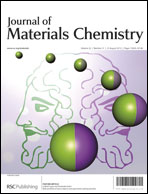The concept of hyperlens, as a novel transformation optics device, is a promising real-time super-resolution lens that can effectively transform evanescent waves into propagating waves and thus break the diffraction limit. However, previous hyperlens implementations usually adopted metal which would absorb most of the energy during light transmission and thus deteriorate imaging efficiency. Here we propose a novel hyperlens design based on dielectric layered graphene and h-boron nitride (h-BN) whose performance can surpass the counterpart design with metal. Our first-principle and Kramers–Kronig relation calculation shows that both layered graphene and layered h-BN exhibit strong anisotropic properties in ultraviolet spectrum regions, where their permittivity components perpendicular to the optic axis can be negative, while the components parallel to the optic axis can be positive. Based on the anisotropic properties, flat and cylindrical hyperlenses are designed and numerically verified with layered graphene at 1200 THz and layered h-BN at 1400 THz, respectively. Our work provides a dielectric hyperlens approach to overcome the diffraction limit at ultraviolet frequencies, which may find applications where dynamic imaging of subwavelength features at the molecular and cellular scales is desired.

You have access to this article
 Please wait while we load your content...
Something went wrong. Try again?
Please wait while we load your content...
Something went wrong. Try again?


 Please wait while we load your content...
Please wait while we load your content...